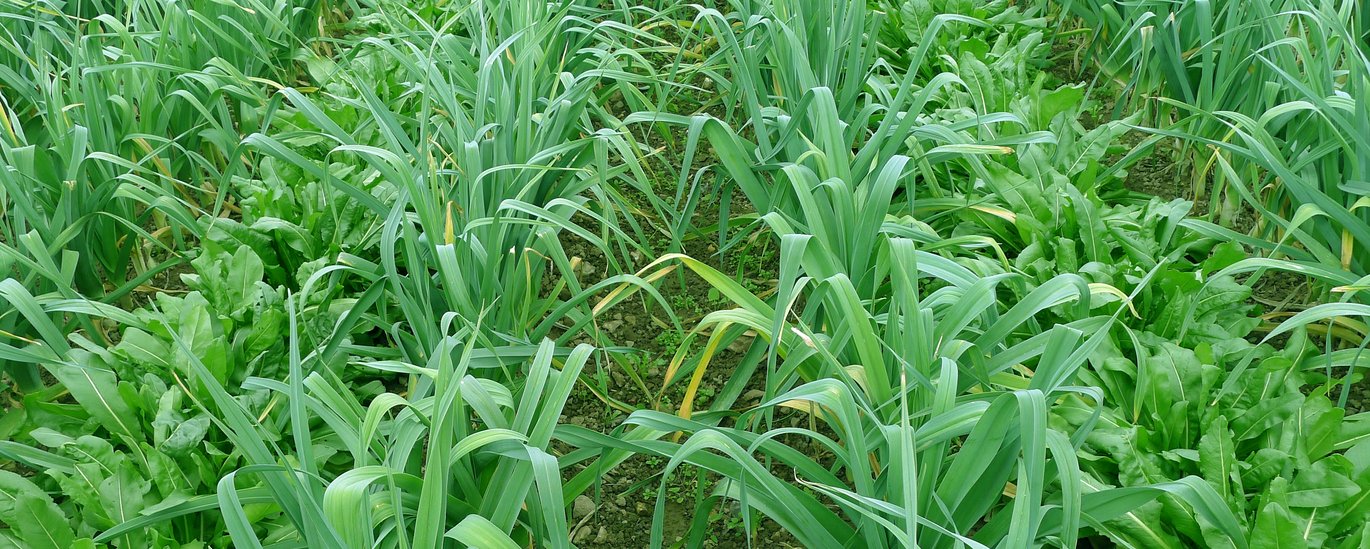Grow more crops at the same time
By growing more crops at the same time, organic vegetable farmers can reduce nitrogen loss to the aquatic environment and reduce the need to apply fertilizer in the subsequent year, according to research from Aarhus University.

When you are in the supermarket contemplating which vegetables to buy, nitrogen is hardly the first thing on your mind. However, the products on the shelves contribute to the total nitrogen cycle in different ways. For instance, consider the leek. This slender bulbous plant has a superficial root system and requires a significant amount of nitrogen. The fact that it is harvested late in the season makes it difficult to grow catch crops. This makes leeks major environmental culprits – irrespective of whether they are grown organically or conventionally.
At Aarhus University scientists are currently trying to optimize the cultivation of organic vegetables – to the benefit of both vegetable producers and the environment. An example of this is the recently concluded CORE Organic project “InterVeg” where scientists from the Department of Food Science, together with international colleagues, examined the opportunities of reducing nitrogen loss by growing catch crops together with vegetables such as leek and cauliflower.
- Traditionally, catch crops are sown once the main crop has been harvested. Instead, we examined whether it was possible to grow the two crop types at the same time – in separated rows – and the results seem promising, says project participant Hanne Lakkenborg Kristensen, Science Leader at Department of Food Science at Aarhus University.
An advantage to the nitrogen balance
As part of the project seven field trials, each with a duration of two years, were carried out in Italy, Slovenia, Germany and Denmark. The Danish trials took place at AU Aarslev in Funen where scientists grew leek together with dyer’s woad (Isatis tinctoria), which belong to the Brassicaceae family.
Specifically, every third field row was designated for this catch crop. The trial demonstrated that leek yield per row was the same as when only vegetables were grown.
- Growing more crops at the same time does not ensure higher yields, but the major advantage is that Isatis tinctoria excellently complement leek growth, both over and below the soil surface, as they have a deeper root system reaching as deep as two meters. This means that Isatis tinctoria plants are able to grow in – and absorb nitrogen from – soil layers that leeks are unable to reach. These plants not only help reduce leaching; they are also able to store nitrogen for next year’s crops when they are plowed into the soil after the winter, and this reduces the need for additional fertilizer from other sources, says Hanne Lakkenborg Kristensen.
However, certain challenges exist in relation to growing vegetables like this. In order for intercropping to be a success, the competition between the crops should be kept at a minimum.
- If we plant crops at the same time the vegetables will not receive sufficient nutrition. However, we have demonstrated that if the catch crops are sown four weeks after the main crop then the crop types will not compete, says Hanne Lakkenborg Kristensen.
Focus on quality
Land use is another challenge. Even though the yield per row will stay the same then the plant producer will have to set aside every third row for catch crop production, and this still means fewer leeks or cauliflowers per field.
However, Hanne Lakkenborg Kristensen emphasizes that organic producers of high-value crops are not typically limited by farmland area. Quality is the main focus and the system allows for improved interaction between the agro-ecosystem and the environment to the benefit of both organic production and the surrounding nature. As an example, the cauliflower trials showed that intercropping attracts more beneficial insects and fewer pests, while the leek trials demonstrated that intercropping also stunts weed growth.
- This cultivation system may result in fewer leeks or cauliflowers per hectare, but – on the other hand – if it ensures an improved interaction between soil, crops, nutrients and the environment it may be worth the effort. Speaking in terms of percentage, this may entail that the producer can sell more crops and reduce waste, says Hanne Lakkenborg Kristensen and continues:
- Additional research is needed on how to control the competition between main crops, catch crops and weeds, and how to reduce nitrogen leaching. These methods require further development if we want to achieve high yields and improved environmental impact.
Further information
InterVeg: Enhancing multifunctional benefits of cover crops - vegetables intercropping is an EU project funded via the ERA-NET CORE Organic 2 and national funding bodies of Slovenia, Germany, Denmark and Italy (headed by CREA). The ERA-NET is coordinated by ICROFS.
The Department of Food Science has a leading position within the research areas of plants, food and the environment. Hanne Lakkenborg Kristensen and PhD student at the Department of Food Science Yue Xie participated in the Danish part of the project.
The research being carried out in INTERVEG is closely aligned to the portfolio of research and teaching activities in the Plant, Food & Environment Flagship in the Department of Food Sciences; this flagship area reflects where the department has a smart specialization and considerable expertise both at a national and international level.
Contact
Science Leader Hanne Lakkenborg Kristensen
Department of Food Science, Aarhus University
E-mail: hanne.kristensen@food.au.dk
Tel.: +45 8715 8354
